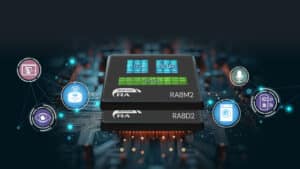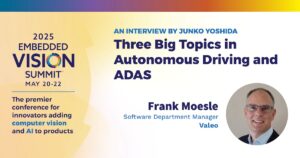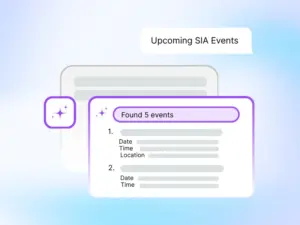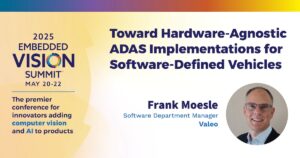Development Tools for Embedded Vision
ENCOMPASSING MOST OF THE STANDARD ARSENAL USED FOR DEVELOPING REAL-TIME EMBEDDED PROCESSOR SYSTEMS
The software tools (compilers, debuggers, operating systems, libraries, etc.) encompass most of the standard arsenal used for developing real-time embedded processor systems, while adding in specialized vision libraries and possibly vendor-specific development tools for software development. On the hardware side, the requirements will depend on the application space, since the designer may need equipment for monitoring and testing real-time video data. Most of these hardware development tools are already used for other types of video system design.
Both general-purpose and vender-specific tools
Many vendors of vision devices use integrated CPUs that are based on the same instruction set (ARM, x86, etc), allowing a common set of development tools for software development. However, even though the base instruction set is the same, each CPU vendor integrates a different set of peripherals that have unique software interface requirements. In addition, most vendors accelerate the CPU with specialized computing devices (GPUs, DSPs, FPGAs, etc.) This extended CPU programming model requires a customized version of standard development tools. Most CPU vendors develop their own optimized software tool chain, while also working with 3rd-party software tool suppliers to make sure that the CPU components are broadly supported.
Heterogeneous software development in an integrated development environment
Since vision applications often require a mix of processing architectures, the development tools become more complicated and must handle multiple instruction sets and additional system debugging challenges. Most vendors provide a suite of tools that integrate development tasks into a single interface for the developer, simplifying software development and testing.

Renesas Adds Two New MCU Groups to Blazing Fast RA8 Series with 1GHz Performance and Embedded MRAM
RA8M2 Devices Address General-Purpose Applications and RA8D2 Devices Target High-End Graphics and HMI; Both Offer Dual-Core Options for Even More Horsepower TOKYO, Japan, October 22, 2025 ― Renesas Electronics Corporation (TSE:6723), a premier supplier of advanced semiconductor solutions, today introduced the RA8M2 and RA8D2 microcontroller (MCU) groups. Based on a 1 GHz Arm® Cortex®-M85 processor

Don’t Give Your Business Data to AI Companies
This blog post was originally published at Plainsight Technologies’ website. It is reprinted here with the permission of Plainsight Technologies. I have joined Plainsight Technologies as CEO to do something radical: not steal your data. Vision is our most powerful sense. We navigate the world, recognize faces, assess our surroundings, operate vehicles, and make split-second

NanoEdge AI Studio v5, the First AutoML Tool with Synthetic Data Generation
This blog post was originally published at STMicroelectronics’ website. It is reprinted here with the permission of STMicroelectronics. NanoEdge AI Studio v5 is the first AutoML tool for STM32 microcontrollers capable of generating anomaly data out of typical logs, thanks to a new feature we call Synthetic Data Generation. Additionally, the latest version makes it

“Three Big Topics in Autonomous Driving and ADAS,” an Interview with Valeo
Frank Moesle, Software Department Manager at Valeo, talks with Independent Journalist Junko Yoshida for the “Three Big Topics in Autonomous Driving and ADAS” interview at the May 2025 Embedded Vision Summit. In this on-stage interview, Moesle and Yoshida focus on trends and challenges in automotive technology, autonomous driving and ADAS.… “Three Big Topics in Autonomous

Andes Showcases Expanding RISC-V Ecosystem and Next-generation “Cuzco” High-performance CPU at RISC-V Summit North America 2025
San Jose, CA October 17, 2025 –– Andes Technology, a Founding Premier Member of RISC-V International and a leading supplier of high-efficiency, high-performance RISC-V processor IPs, will highlight its expanding ecosystem and preview its next-generation out-of-order CPU—code-named “Cuzco”—at RISC-V Summit North America 2025, taking place October 22–23 in Santa Clara, California. Building on its success in

Task-specific AI vs Generic LLMs: Why Precision and Reliability Matter
This blog post was originally published at Rapidflare’s website. It is reprinted here with the permission of Rapidflare. Task-specific AI is redefining what’s possible in mission-critical industries. While generic large language models (LLMs) like ChatGPT excel at broad conversations, they often struggle with accuracy, consistency, and domain-specific context. In sectors where precision and reliability are

“Toward Hardware-agnostic ADAS Implementations for Software-defined Vehicles,” a Presentation from Valeo
Frank Moesle, Software Department Manager at Valeo, presents the “Toward Hardware-agnostic ADAS Implementations for Software-defined Vehicles” tutorial at the May 2025 Embedded Vision Summit. ADAS (advanced-driver assistance systems) software has historically been tightly bound to the underlying system-on-chip (SoC). This software, especially for visual perception, has been extensively optimized for… “Toward Hardware-agnostic ADAS Implementations for

Plainsight Appoints Venky Renganathan as Chief Technology Officer
Enterprise Technology Leader Brings Experience Leading Transformational Change as Computer Vision AI Innovator Moves to Next Phase of Platform Innovation SEATTLE — October 14, 2025 — Plainsight, a leader in computer vision AI solutions, today announced the appointment of Venky Renganathan as its new Chief Technology Officer (CTO). Renganathan is an enterprise technology leader with

